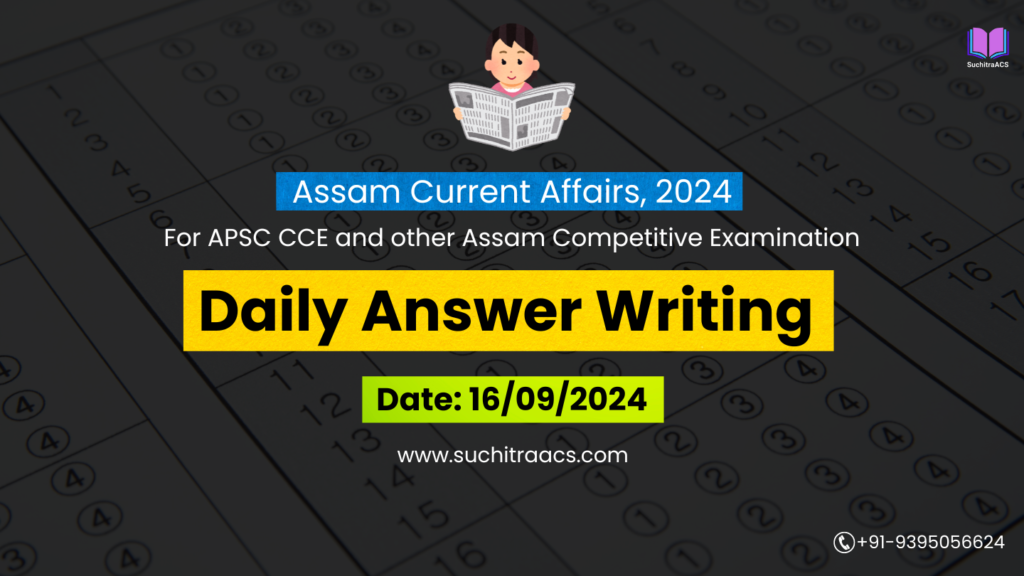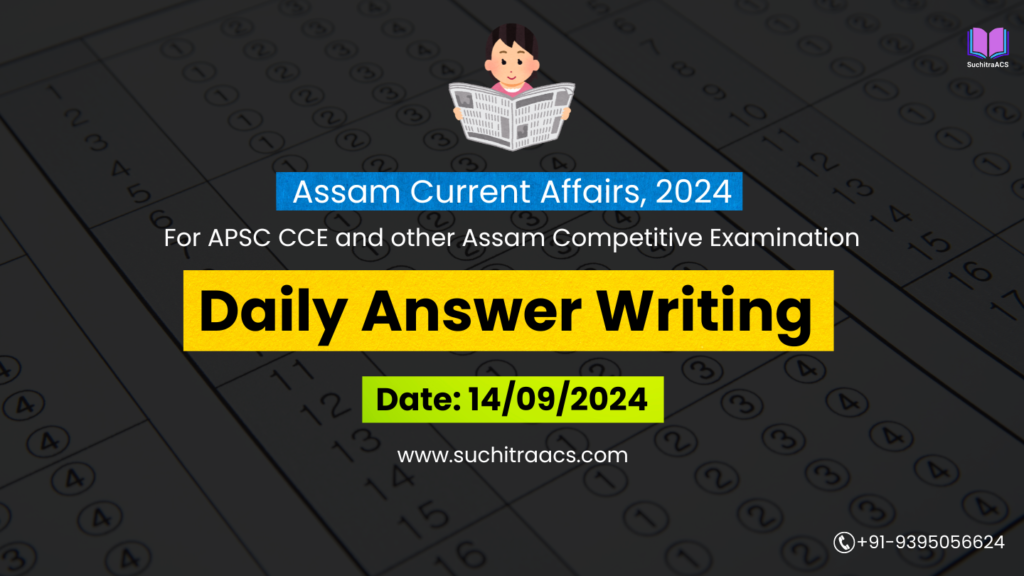APSC Answer Writing (Daily) based on Assam Tribune – 11/10/2025
For APSC CCE and other Assam Competitive examinations aspirants, practicing Daily Answer Writing is vital. This blog covers the most important Main question and its model Answer from the Assam Tribune today (11-10-2025).
📝 Model Answer
Q.“The proposed ‘Jati, Mati, Bheti’ laws in Assam seek to protect the rights of indigenous communities. Discuss their significance and challenges in balancing identity preservation with constitutional equality.”
📘 GS Paper II – Polity & Governance | Federal Issues
📘 GS Paper V – Assam-specific: Society, Demography, Governance
Introduction
Assam’s proposed ‘Jati, Mati, Bheti’ laws (2025) represent a landmark attempt to safeguard the land, employment, and cultural identity of indigenous Assamese communities, in line with Clause 6 of the Assam Accord (1985).
At a time when demographic shifts and migration continue to influence the socio-political fabric of Assam, these laws aim to strike a balance between identity protection and inclusive governance.
Body
1️⃣ Constitutional and Policy Background
- Clause 6 of the Assam Accord (1985): Mandates constitutional, legislative, and administrative safeguards for Assamese identity.
- Legal Framework: The State has legislative competence under the State List (Entry 18 – Land, Entry 45 – Employment in State Services).
- Policy Vision: Aligns with the “Jati, Mati, Bheti” vision articulated by the Assam Government — literally meaning Identity, Land, and Homeland.
- Committees: Justice B.K. Sharma Committee (2020) recommended reservation in legislature, jobs, and land for indigenous people.
2️⃣ Significance of the Proposed Laws
| Dimension | Explanation |
| Cultural Preservation | Institutionalizes safeguards for language, heritage, and traditional institutions. |
| Land Rights Security | Prevents alienation of tribal and indigenous land to non-locals. |
| Employment & Education Equity | Ensures fair access for locals in state jobs and higher education. |
| Political Stability | Addresses long-standing ethnic grievances, reducing insurgent recruitment potential. |
| Administrative Clarity | Provides legal definition of “indigenous Assamese” for policy implementation. |
3️⃣ Challenges and Concerns
| Challenge | Description |
| Definitional Ambiguity | Assam has over 40 ethnic communities; defining “indigenous” is contentious. |
| Constitutional Test | Must conform with Articles 14, 15, 16 — equality and non-discrimination. |
| Legal Overlap | Existing protections under Sixth Schedule and tribal land acts may conflict. |
| Socio-political Polarization | Risk of deepening ethnic divisions and alienating migrant-origin groups. |
| Implementation Bottlenecks | Dependence on old land and population records (1951 NRC, 1971 rolls). |
4️⃣ Constitutional & Judicial Dimensions
- Article 15(4), 16(4): Allow special provisions for socially and educationally backward groups.
- Article 371A–H: Provide regional safeguards — Assam could seek similar enabling provisions.
- Judicial Precedent: Indra Sawhney v. Union of India (1992) upheld reservation within limits of reasonableness.
- Recent Analogy: Meghalaya’s “Resident Certificate Bill” and Nagaland’s “Inner Line” norms show local adaptation.
5️⃣ Way Forward
- Inclusive Definition: Formulate a transparent, historically verifiable list of indigenous communities.
- Consultative Approach: Engage all ethnic groups, scholars, and civil society to prevent exclusion.
- Legal Vetting: Seek concurrence of Attorney General and Governor under Article 200 to ensure constitutionality.
- Integration with Development Goals: Combine protection with inclusive education and entrepreneurship for youth.
- Digital Land Record Modernization: Use Mission Basundhara 3.0 to verify rightful land ownership.
- Institutional Mechanism: Establish Assam Indigenous Affairs Commission for oversight and redressal.
Conclusion
The “Jati, Mati, Bheti” laws are more than legislative instruments — they symbolize Assam’s assertion of identity within India’s plural democracy.
If implemented with constitutional prudence, cultural sensitivity, and social inclusion, they can become a model for harmonizing regional identity with national unity, ensuring justice for indigenous communities while preserving Assam’s composite ethos.
✨ Looking for top-quality APSC Mains Guidance with Personalised Mentor?

🔔 Join Our WhatsApp Study Group!
For exclusive access to premium quality content, including study materials, current affairs, MCQs, and model answers for APSC CCE and other Assam competitive exams.
Click here to join: SuchitraACS Study WhatsApp Group
📚 Want to know more about SuchitraACS’s most affordable courses?
Click here to know more: SuchitraACS Courses for APSC CCE and Assam Competitive Examinations



